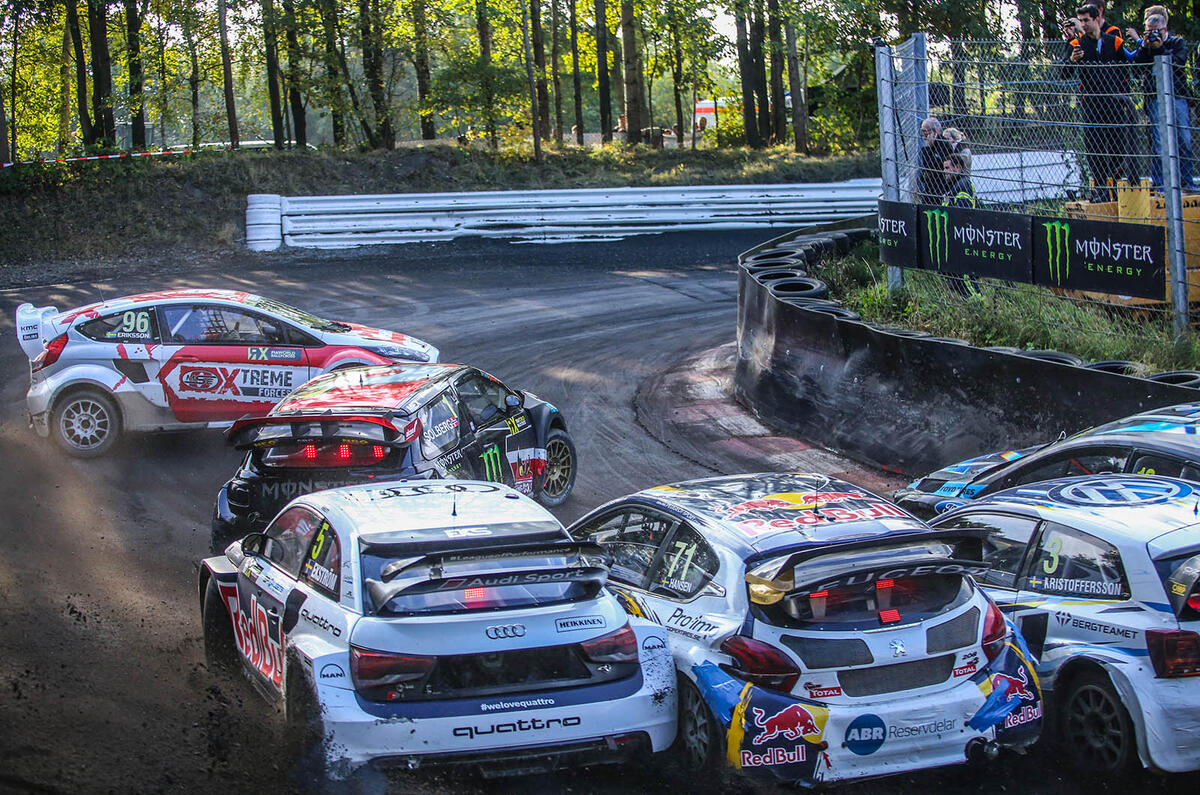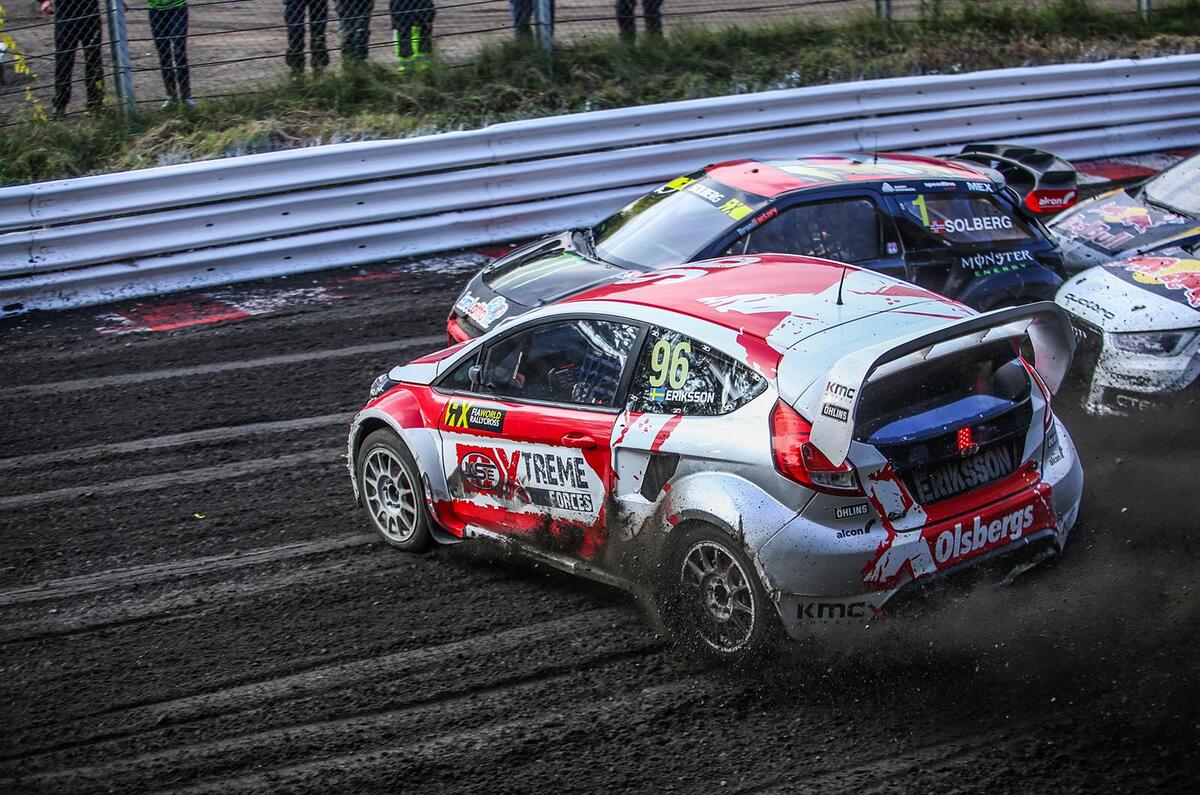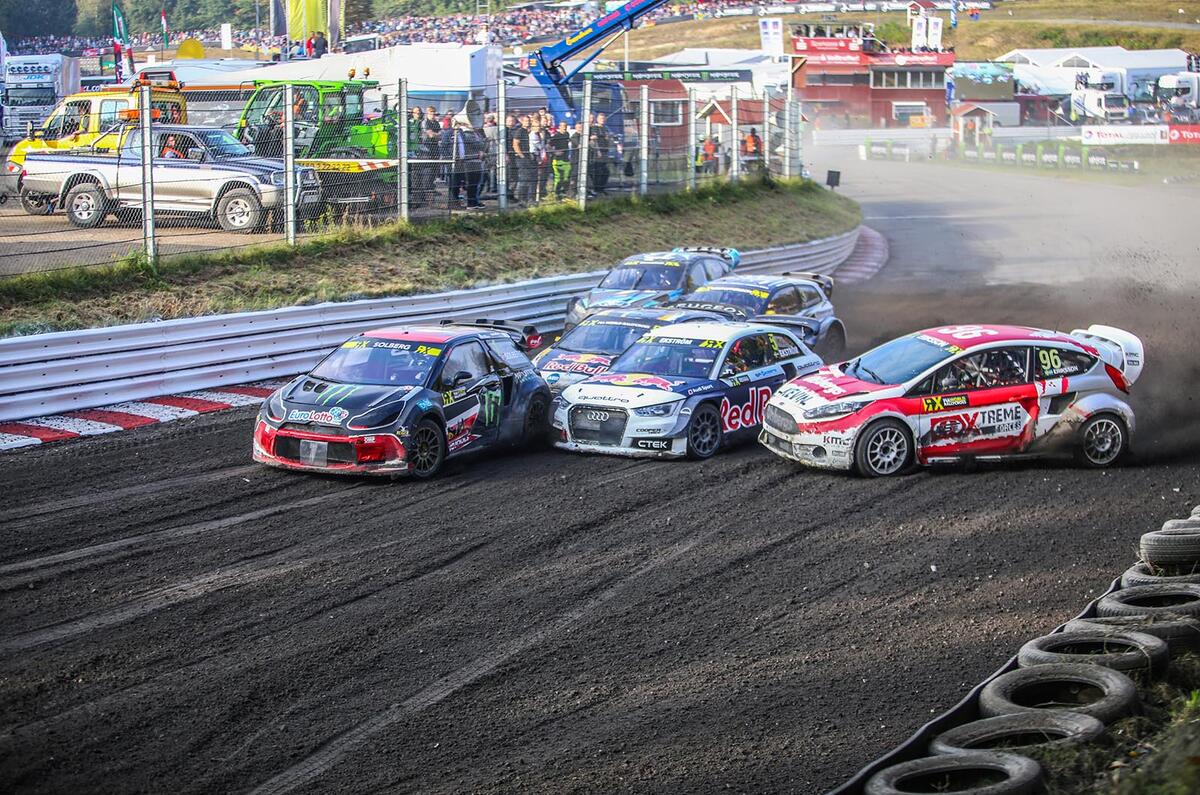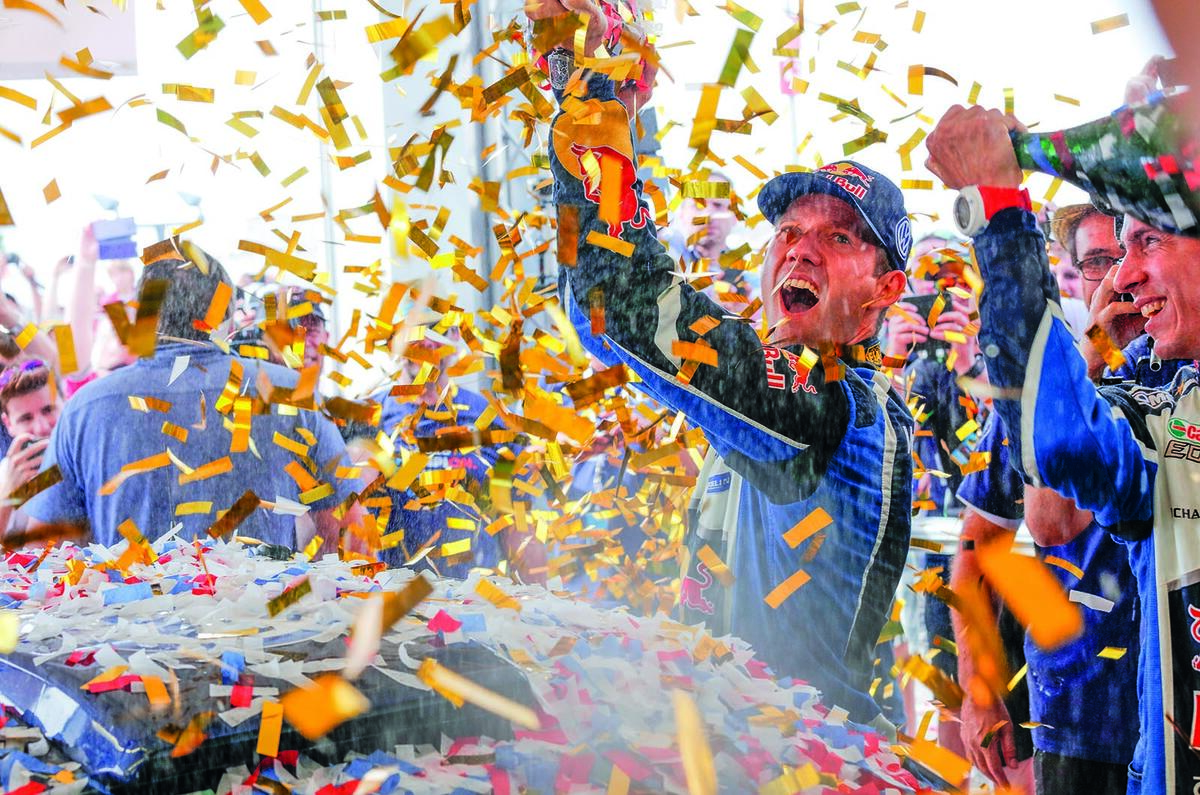There’s a good chance you’ll have seen it by now. On the afternoon of Sunday 16 October, Kevin Eriksson lined up on the second row for the final race of the German round of the World Rallycross Championship.
Going into the first bend, he was stuck near the outside and in roughly fourth place (it’s hard to tell), until the five drivers inside him slowed for the corner and started bundling their way through it. Eriksson, outrageously, slung his Ford Fiesta sideways – virtually backwards – and turned in across the noses of all five other cars and, with all four wheels spinning, drove into the lead.
It’s one of the most spectacular, audacious and ludicrous overtaking manoeuvres in recent motor racing history and, within the space of three days, has been seen more than three million times online via official video channels alone – and countless millions more through social media.
Here's the video:
On the same day, France’s Sébastien Ogier won his fourth World Rally Championship in a row, coming straight off the back of Sébastien Loeb’s nine. Only two car makers and two drivers have won the WRC title since 2004, and were I in charge of the World Rally Championship and watching Eriksson’s move in Germany, I’d shudder. To me – to millions – World RX is where it’s at.
It wasn’t meant to be like this. There was a time when the WRC set itself up to be one of the top five global sports. It was the early 2000s, WRC was on terrestrial TV via Channel 4 and the old way of rallying, in which you knew less about what was going on if you were out spectating on the stages than if you were at home, was set for revolution.
There would be Super Special stages, in which cars would compete two at a time in purpose-built arenas. Expensive, long-distance events like the Safari Rally were dropped; dedicated single service parks were used so spectators could get closer to the teams. Rallying was to become more compact, easier to follow, more engaging and, as a result of fewer road miles, would also be cheaper to run, easier to manage and easier to use as a tool for selling cars – which is, ultimately, why car makers do it.
















Join the debate
Add your comment
The pinnacle is behind us...
The gold old days
I haven't followed touring cars for years and the WRC is something I watch if there is nothing else on. I don't watch F1, the WEC is far more entertaining, although with Audi out I probably won't bother with it anymore, so that leaves me with WX, it's watchable but utterly predictable, the joker lap has to be dropped and they need to add jumps like the US series.
It's not just the WRC, F1